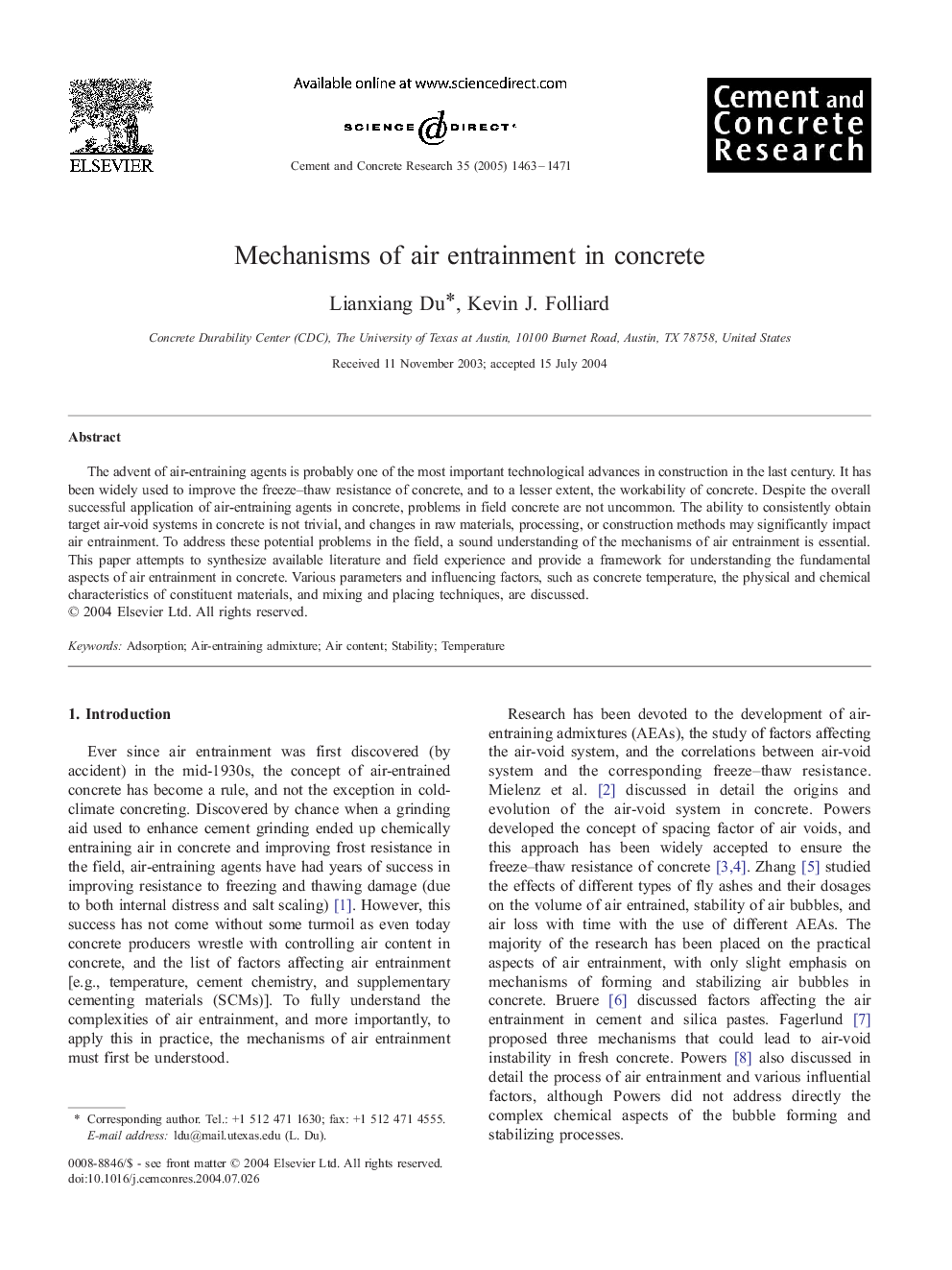| Article ID | Journal | Published Year | Pages | File Type |
|---|---|---|---|---|
| 10622471 | Cement and Concrete Research | 2005 | 9 Pages |
Abstract
The advent of air-entraining agents is probably one of the most important technological advances in construction in the last century. It has been widely used to improve the freeze-thaw resistance of concrete, and to a lesser extent, the workability of concrete. Despite the overall successful application of air-entraining agents in concrete, problems in field concrete are not uncommon. The ability to consistently obtain target air-void systems in concrete is not trivial, and changes in raw materials, processing, or construction methods may significantly impact air entrainment. To address these potential problems in the field, a sound understanding of the mechanisms of air entrainment is essential. This paper attempts to synthesize available literature and field experience and provide a framework for understanding the fundamental aspects of air entrainment in concrete. Various parameters and influencing factors, such as concrete temperature, the physical and chemical characteristics of constituent materials, and mixing and placing techniques, are discussed.
Related Topics
Physical Sciences and Engineering
Engineering
Industrial and Manufacturing Engineering
Authors
Lianxiang Du, Kevin J. Folliard,
